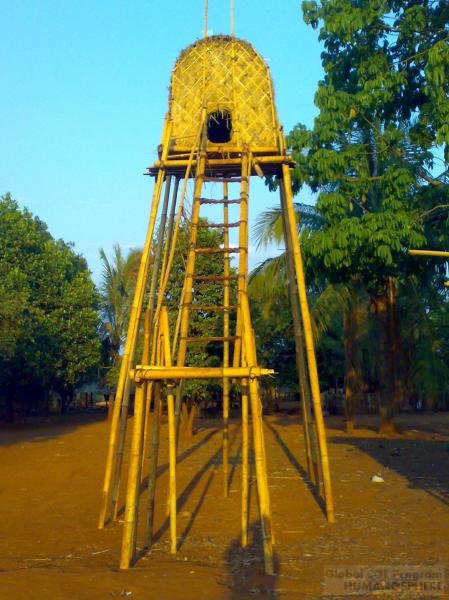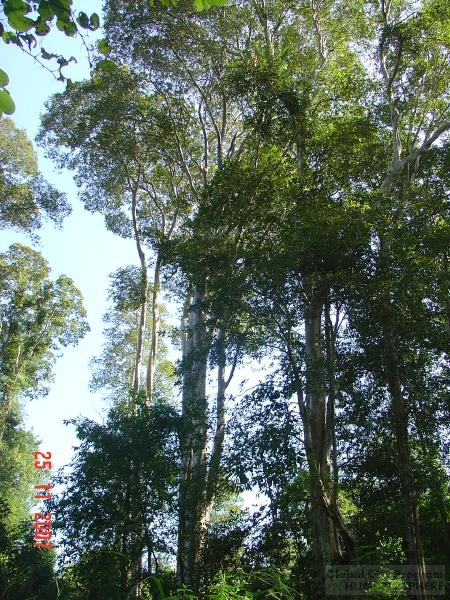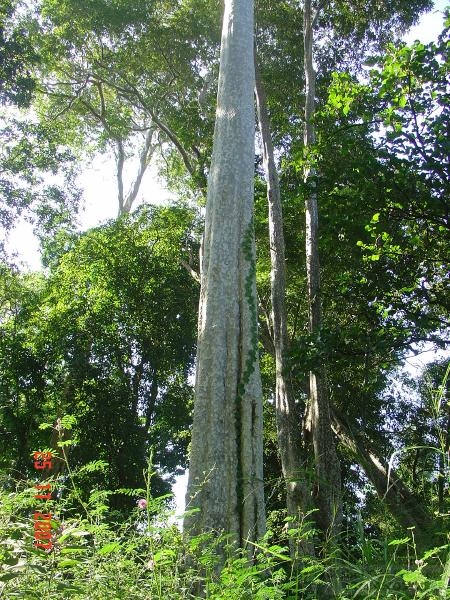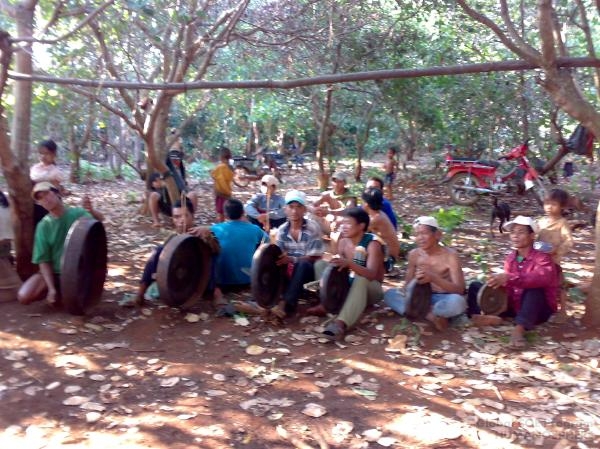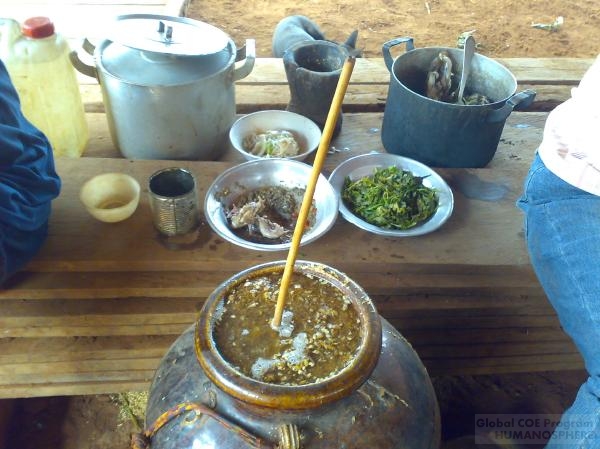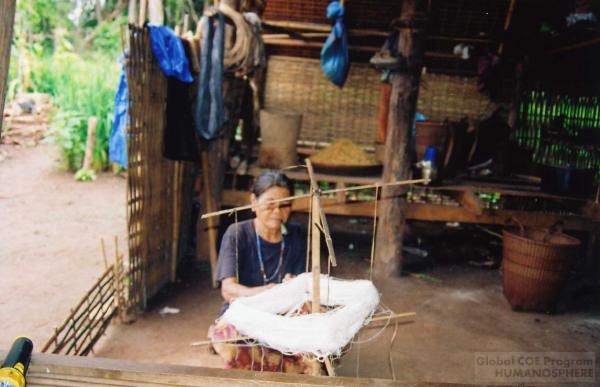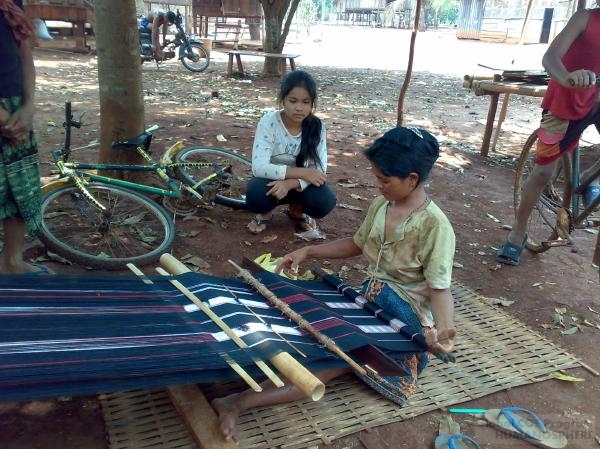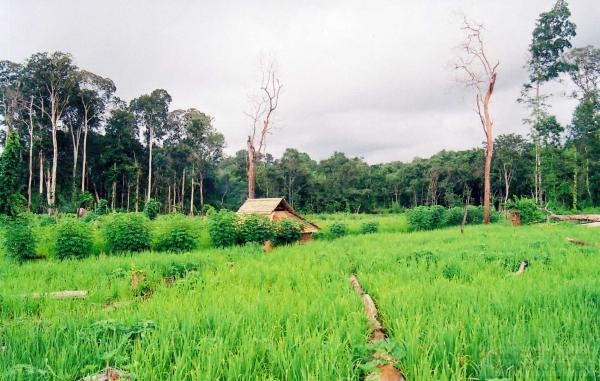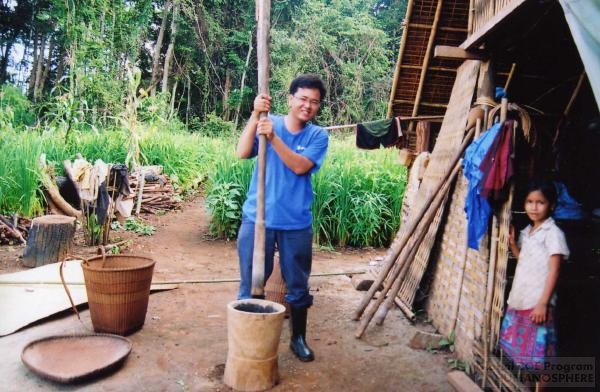Knowledge Conservation
| Knowledge Conservation Among Highland Groups in Cambodia |
| Defining Indigenous Knowledge |
| Reference |
Knowledge Conservation Among Highland Groups in Cambodia
Royal University of Phnom Penh
History Department
Thol Dina
E-mail: tholdina_history[a]yahoo.com
Knowledge conservation among the highland groups in Cambodia is an interesting subject in contemporary research context. The conservation of such a kind of knowledge will compile invaluable sources of information for the local people and the researchers. Through this work, we will have better understanding about the relationship between their knowledge and the milieu. This effort will contribute one part to the work of assimilating men and nature and sustainability of humanoshpere paradigm. To have better understanding of how important of Indigenous knowledge is, I will do a brief review of this knowledge definition and apply it into Cambodia context.
Defining Indigenous Knowledge
The study of indigenous knowledge becomes more interesting when previous studies indicate about its values on the efficient natural resources management (Johan. P 2003: 1). The indigenous knowledge, in the past, had been understood as backward or as the catalysts in destroying natural resources. This view point mostly comes from the government or the authority while anthropologists do not agree with this idea. Anthropologists believe that indigenous knowledge is scientific knowledge and work as a system in which it helps balance the stability of the ethnic highland groups. According to Anan (Anan G, 2000), he found that the destruction of natural resources in Thailand come from the activities of logging companies and high rank people in the government. In contrast, he found that indigenous people have helped preserve most of the natural resources in Northern Thailand. The area with indigenous people can conserve most forest compared to the other places.
This later assumption can be applied to the situation of Cambodia. Ethnic highlanders in northeastern area of Cambodia, before the permission of land and forest concession, could preserve most of their natural resources. Before 1990s, northeastern area of Cambodia had thick forest cover with lots of wild life. However, after 1993, when Cambodia has opened its free market which allow to have land and forest concession, the natural resources depletion becomes bigger and bigger. From the researcher investigation in the field work, the highland community that still practices the knowledge strongly can preserve most of their natural resources. From this perspective, indigenous knowledge is mostly practiced by highland people in rural area.
Indigenous knowledge is practiced among the indigenous people who live in the undeveloped areas (Howes and Chambers 1979). That is why from the perspective of developers who are mostly Westerners conceived this knowledge as un-progressed. However, from recent studies of the anthropologists, the indigenous knowledge really contributes in conserving and sustainable development of natural resources (Virginea D. Nazarea 1999). It means that indigenous people live or have close interaction with the environment so their lives and environment tie closely with each other. From the milieu, they know how to use it in a sustainable way. For example, the practice of land clearing that they have practiced for generation. They have good knowledge of doing it from choosing new plot, clear forest, burning technique, and keeping the old plot fallow for appropriate time.
This knowledge, according to Frederic Bourdier, led to the doubt that how the non-literate people know well how to use and manage their resources sustainability. The answer is that because of the close and interdependence between them and nature or we can call ethno-ecological knowledge (Ronald, C 1957). Ronald Conklin fond that indigenous people have close interaction with the nature surround them. This good relationship with the nature helps indigenous people to develop a well ecological knowledge because only them who know their surrounding environment better than other people.
From the broader perspective, indigenous knowledge can be seen as the knowledge belonging to a community. It is not private or individual which is owned by a particular person. It is a common property in a community whose members of a community are familiar with. This knowledge exists in the ritual ceremonies or any taboos which every body in the village knows and respect. Indigenous knowledge is seen as a process of passing from generation to generation through the oral teaching and daily practices.
From precise scrutiny, indigenous knowledge appears as multifarious, contestable product of an ever-evolving process (Sillitoe, P 1998). This concept indicates that indigenous knowledge has many functions and works as a process. The example from Thailand shows that customary role of indigenous people bans people from cutting forest especially the sacred forest (Annan Ganjanapan 2000). Due to Anan, indigenous people try to work by avoiding the violation to the nature. Furthermore, this knowledge plays an important role in solving the conflict among neighboring communities successfully. The village elder councils and traditional village chief solve the conflict among the highlanders following their customary rules (ibid).
Indigenous knowledge is not non-reflective but it is an evolved process (Scoones and Thomson 1994). It means that this knowledge will be developed when it is in an appropriated time. For instance, a case study of indigenous in northern Thailand shows that the villagers developed their customary rules into an organization to protest against outside intruders and this worked well to protect their forest. This can be clarify through another example from some ethnic highlanders in Ratanakiri province who have adapted their knowledge from time to time to survive. After 1993, with the increase of land grabbing, highlander people in Poy Commune, have situated their knowledge on their land use management by participating the process communal land title registration.
Because indigenous people have close interaction with forest, so their knowledge must have strong relation and developed with the nature. Thus, Yos Santasombat (Santasombat Y 2003) wrote that indigenous knowledge is a repertoire of situated experiences developed in particular physical and cultural contexts from intimate relationship between man and the nature. It means that without the natural resources, indigenous people will face difficulty because their lives strongly depend on the nature. In the other word, the destruction of nature or forest means the disaster to indigenous people. Because of having strong interaction with nature, indigenous people try to do and live avoiding violating nature or forest (Annan, 2000). Yos Santasombat also defined indigenous knowledge as the knowledge that is used by local people in order to make a living in a changing environment.
In the study of ethnography, indigenous knowledge needs to be understood in the broadest terms to encompass not only people’s understandings of social universes they settled, but also of their rights. It means that when we talk about indigenous knowledge, we refer largely to the need for a better understanding and accommodation of people’s knowledge of their right about land tenure arrangement and their approach to payment such as compensation (Sillitoe 2002). In other word, indigenous knowledge is not a limited knowledge that covers limited discussion which refers to only traditional culture, but it is sound science (Huns, 1993).
Studying indigenous knowledge becomes more important when it is recognized that this knowledge is not just the study of body of facts and things that are known. Studying about indigenous knowledge needs to include the issue of how rather than what (Gardner and Lewis 1996). According to Gardner (1997) the knowledge of indigenous people is generally of a sophisticated form. It means that the study of indigenous knowledge requires many variables and careful analysis in order to have deeper understanding which requires the researchers to focus on many aspects.
Indigenous knowledge, in the context of now a day study, is a scientific knowledge and could be understood as a system (Hunn 1982, Diamond 1966, Jones and Konners 1976, Nations and Nigh 1980, Johannes 1981). The indigenous knowledge is not isolated but it has interaction in a variety of ways with science and other agencies of development. This idea leads to the definition which raises that indigenous knowledge never stands still or static, but it is dynamic and strategic (Sikana 1994 and Sillitoe 1998). According to Sillitoe, indigenous knowledge has evolved from time to time to adapt with the new situation it faces. This is clear when we talk about the experience of the indigenous people in South America, especially the Kiaspo minority. These people have developed their idea from being exploited by outsiders to the better understanding of how to get benefit from their resources such as valued tree and diamond. Furthermore, they have good knowledge on how to protect their resources from outside intruders through setting organization in their community.
In Summary, Indigenous Knowledge is multifarious, reflective, scientific, practice by local community and dynamic. Ethnic highlanders have used their knowledge from time to time to sustain their livelihood. Their knowledge is maintained and used to protect and preserve their resources and property. Highland people have their own property regime which has evolved from time to time. Therefore, indigenous knowledge conservation should be a prioritized one.
In this context, there are a variety of topics that can be conducted in the field of knowledge conservation among indigenous people in Cambodia. It ranges from the traditional rituals, taboos, agricultural rituals, wedding ceremony and so forth.
Reference
Anan Gajanapun. (1998). The politics of conservation and the complexity of local control of forest in the Northern Thailand Highlands. Mountain Research and Development 18 (1): 71-82.
Anan Gajanapun. (2000). Local control of land and forest: Cultural Dimensions of Resources Management in Northern Thailand. Published in Chiang Mai, Thailand.
Conklin, H. R. (1954). The Relation of Hanunúo Culture to the Plant world. Ph. D Dissertation, Yale University.
Diamond, J. (1996). Zoological Classification System of a Primitive People. Science: 151:1102-4.
Gardner, K. (1996). Mixes Messages: Contested Development and the Plantation Rehabilitation Project. Oxfords: Berg, p.133-56.
Howes, M., et al. (1979). Indigenous Technical Knowledge: Analysis Implications and Issues. IDS Bulletin, 10 (2): 5-11.
Hunn, E. (1982). The Utilitarian Factor in Folk Biological Classification. American Anthropologist, 84: 830-47.
Johan, P. (2003). Negotiating Local Knowledge: An Introduction. Edited by Johan Pottier, Alan Bicker and Paul Sillito. London, Pluto Press.
Jones, N.B., et al. (1976). In Kalahari hunter-gatherers: Studies of the Kung San and their neighbors. Cambridge: Harvard University Press.
Nations, G.P., et al. (1980). The Evolutionary Potential of Lacandon Maya Sustained Yield Tropical Forest Agriculture. Journal of Anthropological Research 360: 1-30.
Sikana, P. (1994). Indigenous Soil Characterization in Northern Zambia. London: Intermediate Technology Publication.
Santasombat, Y. (2003). Biodiversity: Local Knowledge and Sustainable Development.
Sillitoe, P., et al. (2002). Participating in Development: Approaches to Indigenous Knowledge. Published by Routledge: USA.
Virginia, D. N. (1999). Ethnoecology: Situated knowledge/Located lives. The United State: The University of Arizona Press.
